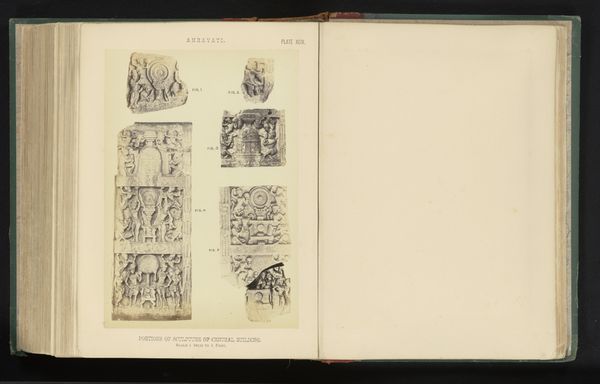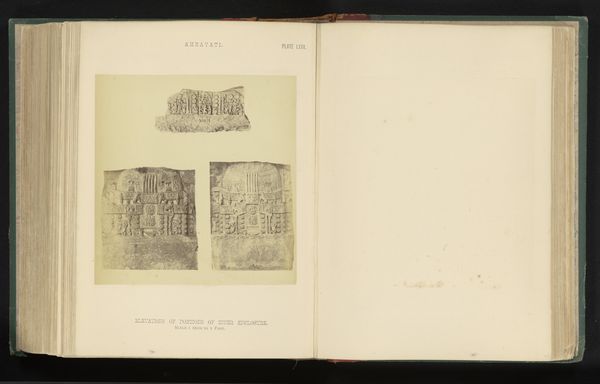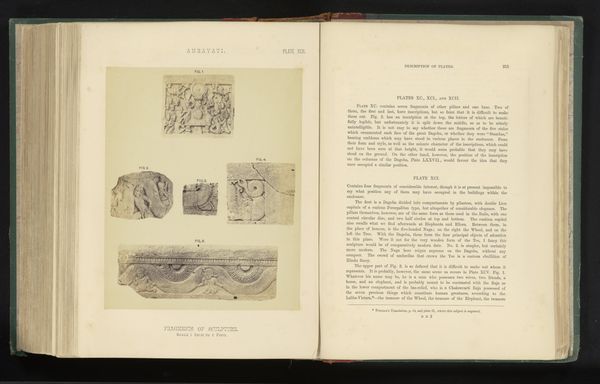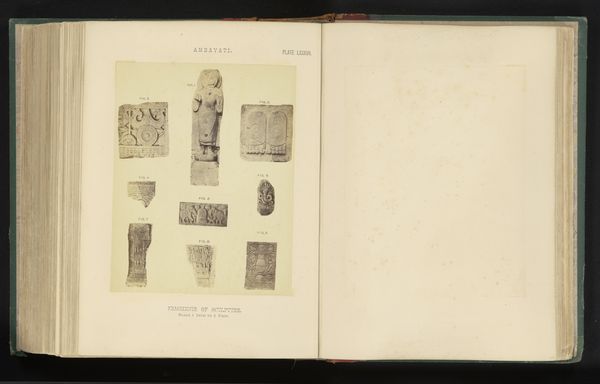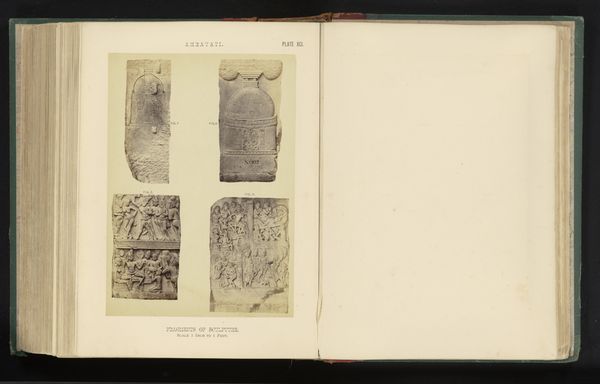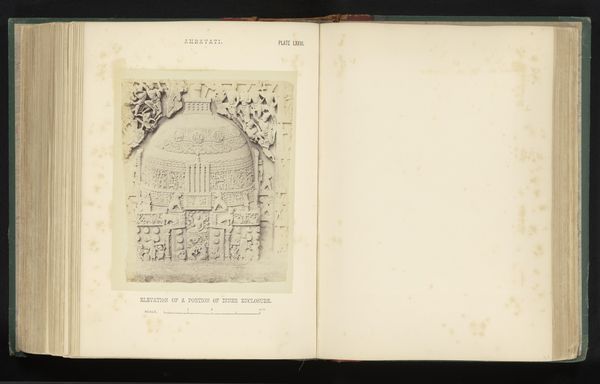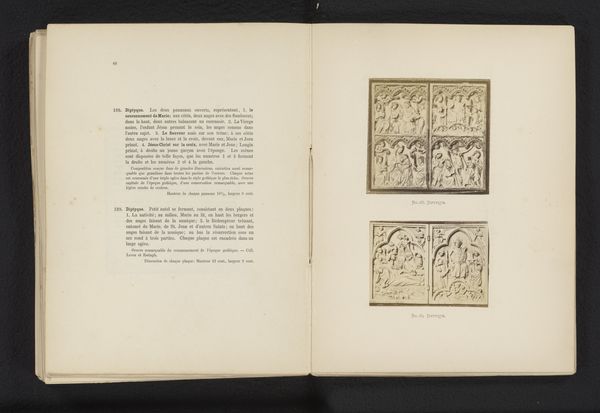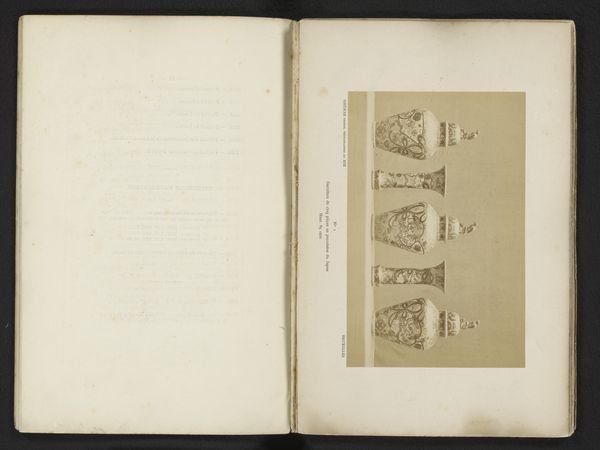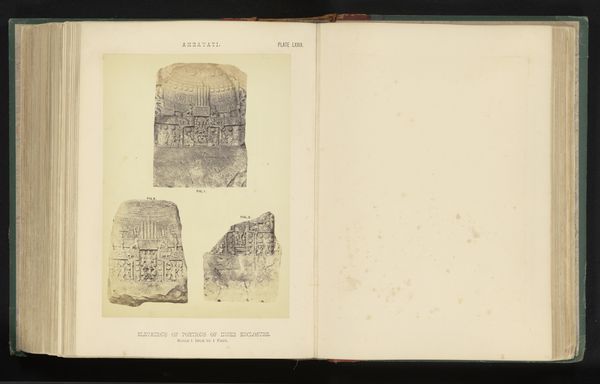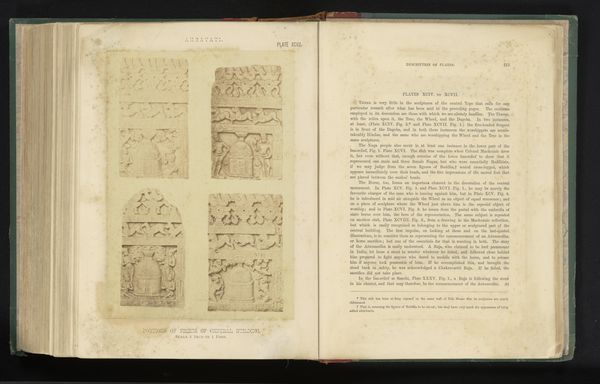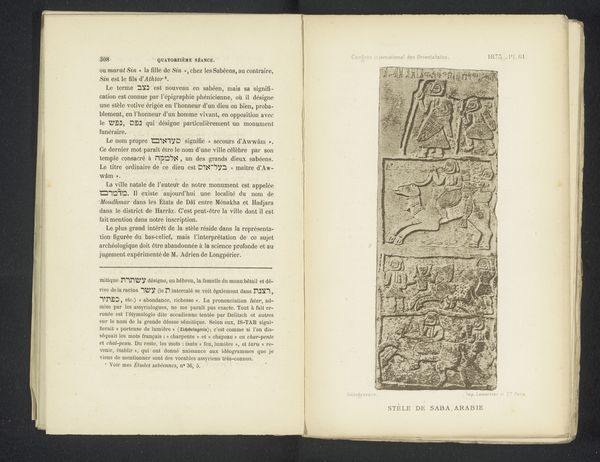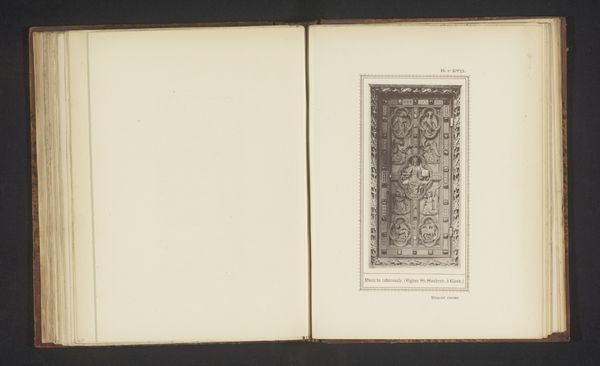
print, relief, sculpture
# print
#
asian-art
#
relief
#
figuration
#
coloured pencil
#
sculpture
#
history-painting
Dimensions: height 251 mm, width 201 mm
Copyright: Rijks Museum: Open Domain
Editor: So, here we have what seems to be a plate from a book, entitled 'Fragmenten van sculpturen', dating back to before 1868, by William H. Griggs. It depicts photographic reproductions of relief sculpture fragments. I am struck by how the materiality of the sculptures – the stone itself, the process of carving – is somewhat lost in translation through the print medium. How does the context of their creation and reproduction influence your interpretation of these fragments? Curator: This reproduction gives insight into the cultural consumption of Asian art at that time. It wasn't just about appreciating the aesthetic value of these fragments; it was about cataloging and possessing knowledge. Think about the labour involved: extracting these pieces, transporting them, photographing them, then producing and distributing this print. Editor: It's almost a form of artistic colonialism, reducing culturally significant objects into data for consumption, isn't it? The act of creating these prints shifts the sculptures from sacred or historical objects to commodities. Curator: Precisely! Consider also the choice of material for the prints themselves. The quality of the paper, the ink used - all contribute to the perceived value and durability of this ‘knowledge.’ Who had access to this book? Who was meant to consume this imagery, and for what purpose? Was it for academic study, artistic inspiration, or merely exotic display? Editor: That really reframes how I see the print itself. It's no longer just a historical document but a product with its own specific production and consumption cycle. So by examining the book as an artifact, we can gain insight to the production methods used in 1868 to produce such printing. Curator: Exactly. And, consider the act of "fragmenting" itself. What was lost or gained in removing these pieces from their original context? This removal speaks volumes about the dominant culture's desire to dissect and categorize the art and culture of another civilization. Editor: This really shifts the focus from the sculpture itself to the historical and material processes surrounding it. It's fascinating to think about how something like this print, seemingly simple, is actually laden with cultural and political implications. Curator: Indeed, it's a complex interplay of artistic value, material reality, and power dynamics all wrapped up in a single page.
Comments
No comments
Be the first to comment and join the conversation on the ultimate creative platform.
